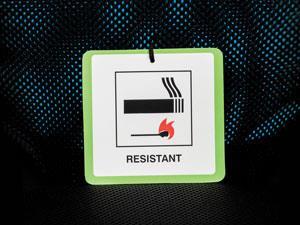Brominated flame retardants found in toys and cup lids

Researchers in Europe have narrowed the search for bad recycling practices that are to blame for some toys and food packaging inadvertently containing banned pollutants.
Manufacturers often incorporate chemicals designed to limit household fires, such as brominated flame retardants, in soft furnishings and electronic devices. However, concerns about brominated flame retardants’, particularly polybrominated diphenyl ethers’, impact on the environment and human health means their use is heavily restricted.
Previous studies have already indicated that brominated compounds unintentionally exist in toys and food packaging. The EU recently updated its guidance on recycling and disposal of materials containing polybrominated diphenyl ethers to combat this contamination.
Chromatography combined with mass spectrometry is the standard method to analyse plastics for brominated flame retardants, but this is expensive and time consuming. Now, Stuart Harrad, at the University of Birmingham, and colleagues have shown they can simplify the process by using a handheld x-ray fluorescence spectrometer. The handheld spectrometer can detect bromine and antimony, amongst other elements. They reasoned that since antimony compounds are often used in conjunction with restricted polybrominated diphenyl ethers, finding the two elements together is a good indicator of flame retardant contamination.
The team found evidence for brominated flame retardants in 61% of 26 samples of toys and cup lids. Rare earth element concentrations in the positive samples correlated to a particular waste stream – plastics used in copier, laptop and computer casings – for the first time providing evidence on the source of the problem.
Andreas Buser, an expert in brominated flame retardants at the Swiss Federal Office for the Environment, says ‘This study confirms once again that inappropriate recycling practices may lead to contamination of consumer products such as children’s toys with banned persistent organic pollutants. These pollutants need to be eliminated from recycling streams as quickly as possible to avoid them from being in circulation for an extended period.’
It is not yet clear if products containing recycled brominated contaminants are toxic. ‘We are starting to look into this in another project looking at kitchen utensils where we are examining brominated flame retardants transfer from utensils into hot cooking oil and dermal uptake from handling such utensils,’ explains Harrad.
References
This paper is free to access until 17 August 2017
A Guzzonato, F Puype and S J Harrad, Environ. Sci.: Processes Impacts, 2017, DOI: 10.1039/c7em00160f











No comments yet